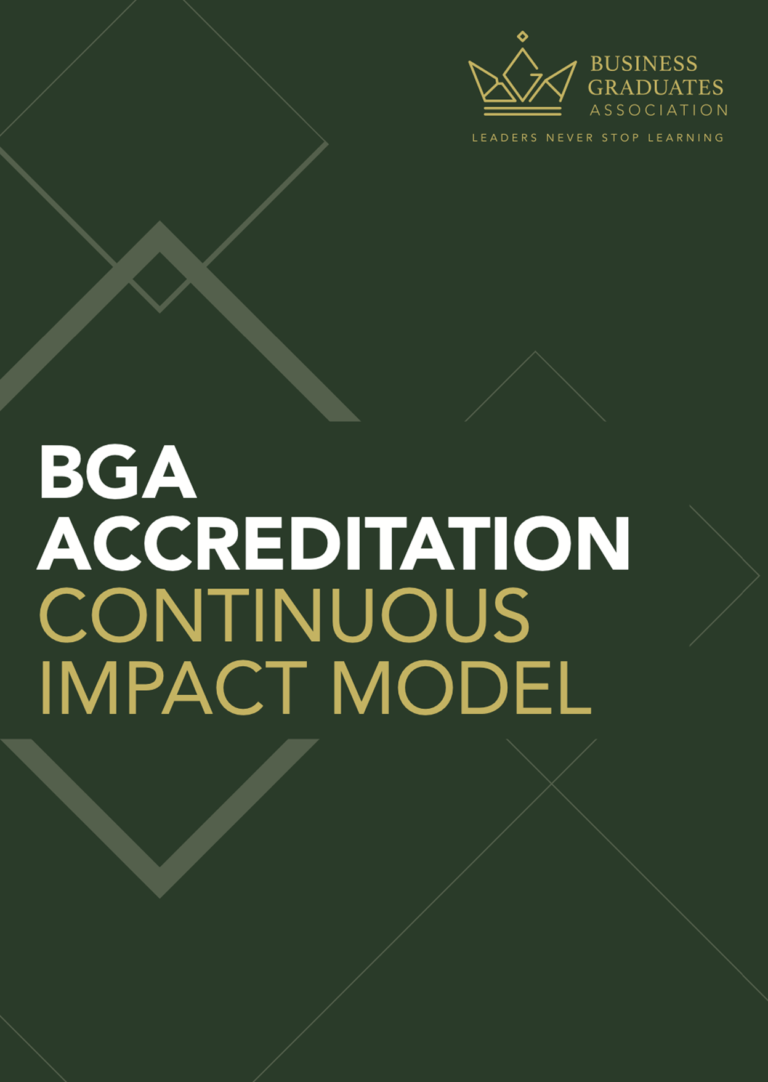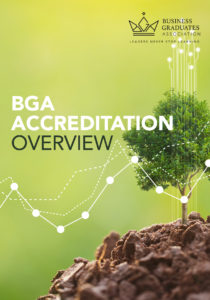BGA’s CIM assesses the improvement in a business school's impact across a range of dimensions
BGA’s ‘Continuous Impact Model’, offers a unique process that is designed to support institutions to develop an understanding of their impact on stakeholders. It is a key element of the BGA accreditation process.
The model is designed to measure the changes in impact variables over time. It also establishes evidential feedback loops to improve the quality of the institution and its activities in a continuous improvement process. Schools are required to undergo the CIM once they begin the accreditation process.
Schools undergoing accreditation are assigned an Accreditation Director and an academic mentor. These individuals play a supportive role in ensuring the school’s development and measurement of its impact metrics are used to meet BGA’s accreditation criteria.

The role of the Continuous Impact Model (CIM)
Institutions are expected to provide relevant, measurable metrics under each dimension of the CIM. The number may vary significantly from one institution to another. However, it is recommended that 10 impact metrics are developed, where at least three reference the UN SDG’s. Institutions are required to provide at least three years’ worth of data to effectively showcase measurable changes, though it is recommended to provide more if additional years of data are available.
Purpose
Being able to effectively measure an institution’s impact on a range of stakeholders helps to inform them of their strengths and weaknesses. It also ensures that a Business School is achieving its mission, alongside building trust among stakeholders.
Moreover, the CIM informs stakeholders of the steps the institution is taking to continually improve, using quantitative metrics. By maintaining a high level of transparency, accountability, and commitment to higher principles, an institution can confidently and accurately evidence its status and level of quality.
A modern, impact-driven approach
The CIM is not intended to be prescriptive – an institution will work with an appointed academic mentor to develop appropriate metrics and ensure that a feedback loop is established and effective over time. The developed key metrics, and how well the institution achieves them, will ultimately determine if it will achieve BGA accreditation. The data produced will be used in the assessment stage of the accreditation process. Institutions are expected to provide a narrative for each metric explaining why trends are either positive or negative and what potential solutions may be available (if any).
Scope
The length of time required to create the impact metrics may vary significantly from institution to institution. Some may have data readily available for the development of impact metrics, while others may have to begin the data collection process at the beginning of the pre-assessment stage. It is expected that the chosen impact metrics will be broad, covering a wide range of categories; however, at least one metric must specifically reference the UN Sustainable Development Goals (SDGs).
Are you interested in applying for BGA accreditation?
To obtain further details about BGA accreditation, kindly indicate your interest by completing the registration process to access the BGA accreditation brochure.

